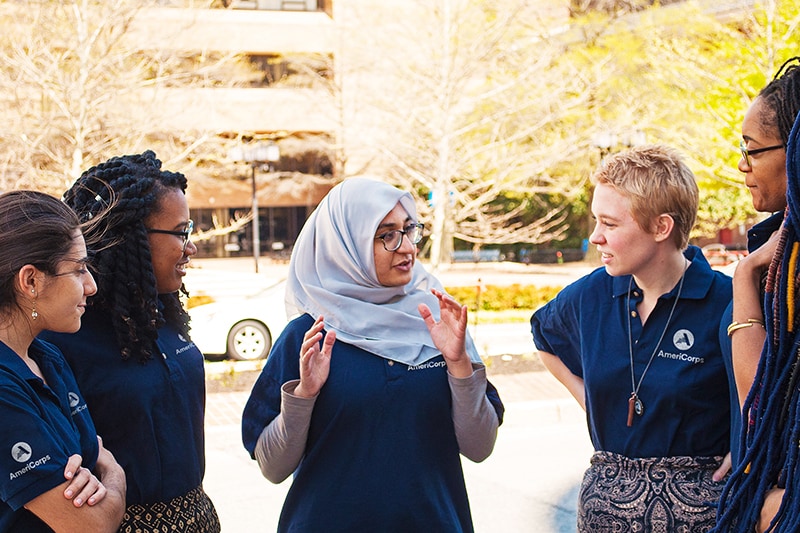At a glance
Investments in the public health workforce build capacity for state, tribal, local, and territorial public health agencies to provide essential public health services. This capacity is critical for communities to be able to respond to emergencies and thrive.

Important things to know
Decades of underinvestment have undermined the public health workforce—America's first line of defense against disease outbreaks and other health threats.
With diminished funding and hiring barriers, health departments at state, local, tribal and territorial levels are unable to recruit and retain skilled professionals.
175 million Americans
Shrinking staff and reduced capacity have led to
- Workers unprepared to keep up with changes in technology
- A lack of systems and data to assess and monitor workforce needs
- Added work-related stress and burnout among the existing workforce
Building Work Capacity
For our public health workforce to be effective and responsive, it must reflect the communities we serve. CDC's CORE Health Equity Science and Intervention Strategy challenges us to make health equity a foundational goal.
The Division of Workforce Development (DWD) provides leadership to chart a path forward for multi-level public health workforce development. DWD engages CDC programs and public health partners to share quality science, make data-driven decisions, and support strategic workforce development.
Recruit: Attract a Diverse Public Health Workforce
Fellowships and Training Opportunities
CDC offers many internships, full-time fellowships, and other opportunities on public health topics from epidemiology to health economics. These opportunities offer pathways to public health careers. Strengthening the diversity of those who participate in these programs today leads to more inclusive public health workforce tomorrow.
Public Health AmeriCorps
Public Health AmeriCorps is a groundbreaking program to recruit, train, and develop the next generation of public health leaders. It builds local capacity to advance equitable health outcomes.
Public Health Leadership and Education, Advancing Health Equity and Data Sciences (PHLEADS)
PHLEADS, a cooperative agreement program, supports identifying and implementing best practices in leadership, data science education, training, recruitment, and retention. PH LEADS national partner associations include
Train: Upskill the Current and Future Workforce
Curated training and learning platforms give the whole public health community access to quality courses and continuing education.
CDC TRAIN
CDC TRAIN is an online learning management system operated in partnership with the Public Health Foundation.
CDC Learning Connection
CDC Learning Connection highlights quality trainings for healthcare and public health professionals. All activities are based on adult learning principles and reflect CDC quality training standards.
Build Evidence: To Inform Tomorrow's Workforce
Public Health Workforce Research Center (PHWRC)
PHWRC supports and shares rigorous, applied research that helps decision-makers at all levels of public health understand workforce needs.
Leadership Initiatives
Public Health Workforce Interests and Needs Survey (PH WINS)
PH WINS is the only nationally representative source of data on the people that make up the governmental public health workforce.
LIGHTS, CAMERA, ACTION: The Future of Public Health National Summit Series
A four-part series convened by the CDC Foundation to advance recommendations for a modernized U.S. public health system.
National Consortium for Public Health Workforce Development
The National Consortium for Public Health Workforce Development was convened by the de Beaumont Foundation. This group relaunched in 2020 to develop an action plan for strengthening and supporting the workforce.
